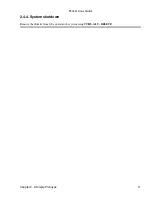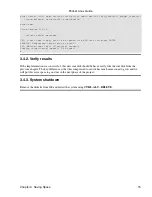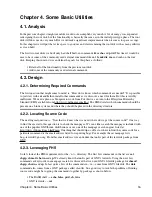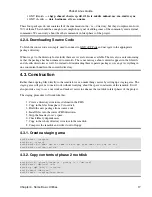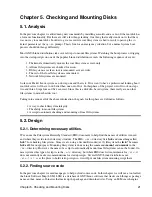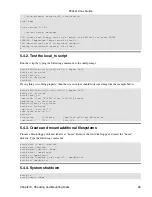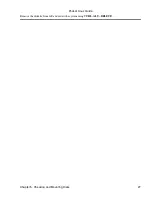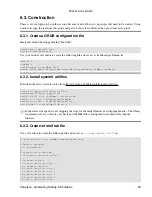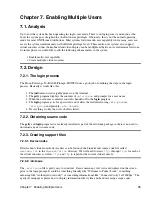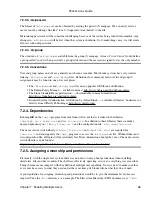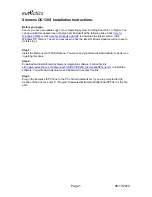
fsck −ATCp
if [ $? −gt 1 ]; then
echo "Filesystem errors still exist! Manual intervention required."
/bin/sh
else
echo "Remounting / as read−write."
mount −n −o remount,rw /
echo −n >/etc/mtab
mount −f −o remount,rw /
echo "Mounting local filesystems."
mount −a −t nonfs,nosmbfs
fi
#
# end of local_fs
Set execute permissions on the script.
bash# chmod +x local_fs
5.3.8. Create a compressed root disk image
bash# cd /
bash# dd if=/dev/zero of=/dev/ram7 bs=1k count=4096
bash# mke2fs −m0 /dev/ram7 4096
bash# mount /dev/ram7 /mnt
bash# cp −dpR ~/staging/* /mnt
bash# umount /dev/ram7
bash# dd if=/dev/ram7 of=~/phase4−image bs=1k count=4096
bash# gzip −9 ~/phase4−image
5.3.9. Write the root disk image to floppy
Insert the diskette labeled "root disk" into drive fd0.
bash# dd if=~/phase4−image.gz of=/dev/fd0 bs=1k
5.4. Implementation
5.4.1. System startup
Start the system using the following procedure:
Boot the PC using the floppy labeled "boot disk".
•
At the
grub>
prompt, type the usual kernel and boot commands, but without the
rw
parameter this
time. In other words, type
kernel (fd0)/boot/vmlinuz init=/bin/sh
root=/dev/fd0 load_ramdisk=1 prompt_ramdisk=1
, press Enter then type
boot
and
press Enter.
•
Put in the recently created root disk when prompted.
•
The output should resemble the example below:
GNU GRUB version 0.95
grub> kernel (fd0)/boot/vmlinuz init=/bin/sh root=/dev/fd0 load_ramdisk=1 prompt_ramdisk=1
Pocket Linux Guide
Chapter 5. Checking and Mounting Disks
25

